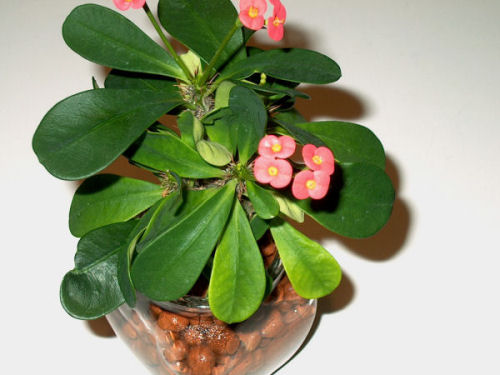 Sometimes, hydroculture is called the passive hydroponics. It is like the little brother of hydroponics – with smaller containers, simpler solution, and a cheaper and less complicated system. While hydroculture likes hydroponics, can be used for growing vegetables that we can buy in supermarkets, hydroculture is more for houseplants and for the fun of indoor gardening.
Sometimes, hydroculture is called the passive hydroponics. It is like the little brother of hydroponics – with smaller containers, simpler solution, and a cheaper and less complicated system. While hydroculture likes hydroponics, can be used for growing vegetables that we can buy in supermarkets, hydroculture is more for houseplants and for the fun of indoor gardening.
|
|
||||
|
When roots become deficient in mineral nutrients, particularly calcium and boron, which are required in the external solution for normal functioning of roots, the roots die and decay. Continue reading Watering Hydroculture Plants Hydroculture plants are houseplants that grown in water, and the roots of these plants are called water roots. Water Roots differ from soil-grown roots. Water roots often seem to be more brittle than soil-grown ones. This may due to the bigger aerenchyma – the airy tissue found in roots of plants that allows exchange . . . → Read More: Hydroculture – Water Roots vs Soil-Grown Roots
Some call it “hydroculture.” However, instead of the plant itself, hydroculture is referring to a system, a simpler version of hydroponics, which involves the use of an inner pot, an outer pot, a water level indicator, and such. Continue reading So what is it called? Hydroculture? Aquatic plants? Water roots? Even though I have seen bamboo stick in a pot of pebbles filled with water, but it is only until recently, when I started to get my interest in indoor gardening and tabletop gardens, did I realize that plants actually don’t need soil to grow. Essentially the soil is just a medium for holding . . . → Read More: Hydroculture – Clean, Easy, and Simple! Here are my top ten indoor gardening tips for gardening novices. Tip 1 – Choose the Right PlantBefore you bring a houseplant into your house, you just have to make sure you can give what it needs to grow healthily. Choose only those plants that will be able to grow in the climate and condition of your room. Here is a list of suitable houseplants with photos for indoor gardening that you may find helpful. Tip 2 – Enough Sunlight?
Related Post about Light Requirements Continue reading Ten Indoor Gardening Tips for Gardening NovicesOkay, horticultural charcoal does not absorb odors, enrich or purify soil, or ward off any insect (more on Myths of Horticultural Charcoal in Gardening). So, what good does horticultural charcoal do in gardening? Continue reading What Can Horticultural Charcoal Do in Gardening? Charcoal has been used for horticultural purposes for at least two thousand years. Archaeological researches have come up with evidence of charcoal being used as a soil ameliorator in the Amazon Basin since around the time of Christ (Check here for more on Terra Preta – Amazonian dark earth). Many of us have heard of the value of horticultural charcoal in gardening, not only that charcoal could retain moisture, but also some other amazing functions such as absorbing odors, purifying water, and warding off bugs and slugs. Many of these are not true, and those vendors, who have misled their customers with exaggerated, untruthful claims in their ads, are responsible for part of this confusion. Continue reading Myths of Horticultural Charcoal in Gardening While someone may suggest saving the leftover charcoal after a barbecue gathering for gardening use, another may believe that the use of filtering charcoal can yield better performance in purifying the potting soil. None of these is either feasible or true, but only an urban myth of horticultural charcoal. Not all charcoal are created equal. And horticultural charcoal cannot substitute by either barbecue charcoal or filtering charcoal. Continue reading Horticultural Charcoal – Can be Substituted by Barbecue Charcoal or Filtering Charcoal? |
||||
|
Copyright © 2025 Gardening on Cloud 9 - All Rights Reserved |
||||
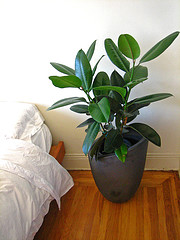 How long a plant lives in a water culture greatly depends on the water source. Water should keep fresh and nutritious, for plants need mineral nutrients to grow healthy.
How long a plant lives in a water culture greatly depends on the water source. Water should keep fresh and nutritious, for plants need mineral nutrients to grow healthy.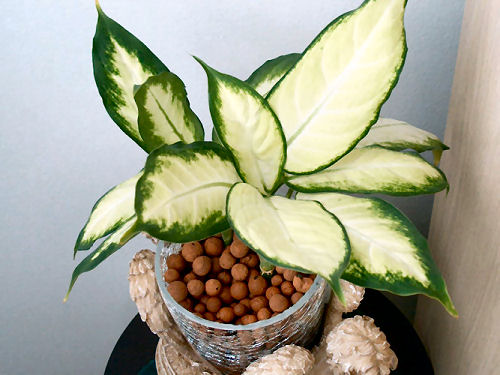 It was quite difficult when I first did my research online on this subject, for I couldn’t find what exactly it is called. It seems like that there is no one specific terminology for this type of plants.
It was quite difficult when I first did my research online on this subject, for I couldn’t find what exactly it is called. It seems like that there is no one specific terminology for this type of plants.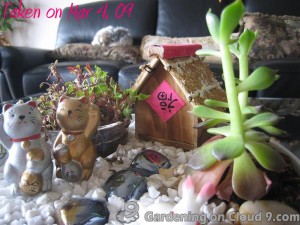 Like oxygen and water, plants need sunlight to grow healthily. If your house does not have a lot of sunlight, and if you are not planning to use any artificial light, don’t worry, for you still have many options to choose from. Different types of houseplant require different amount of sunlight. There are many types of plants that thrive in medium to low light conditions, such as African violets, Boston ferns, Spathiphyllum, Philodendrons, and many more.
Like oxygen and water, plants need sunlight to grow healthily. If your house does not have a lot of sunlight, and if you are not planning to use any artificial light, don’t worry, for you still have many options to choose from. Different types of houseplant require different amount of sunlight. There are many types of plants that thrive in medium to low light conditions, such as African violets, Boston ferns, Spathiphyllum, Philodendrons, and many more.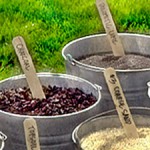




Recent Comments